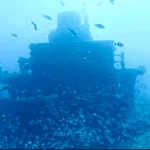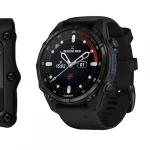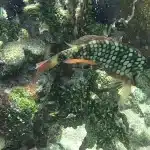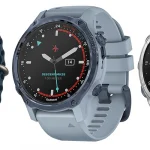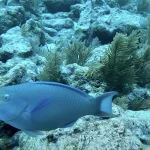Unveiling the Underwater Wonders of Key West and Key Largo
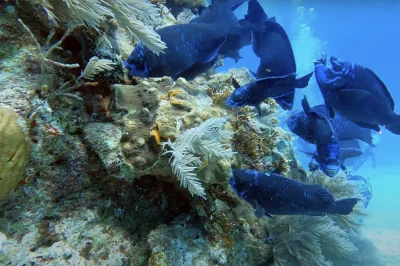
Table of Contents
- Unveiling the Underwater Wonders of Key West and Key Largo
- The Ultimate Dive Site Showdown: Key West vs. Key Largo
- Diving Deep into Wrecks: Key West’s Historical Treasures
- Reef Exploration Myths: Key Largo vs. Key West
- Avoiding Common Diving Mistakes in the Florida Keys
- Environmental Trends Impacting Florida Keys Diving
- Emerging Diving Trends and Technologies in Key West and Key Largo
- Choosing Your Ideal Dive Destination: Data-Backed Insights
Introduction
When it comes to diving in Florida, Key West and Key Largo are two iconic destinations in the Florida Keys offering distinct underwater experiences. Both locations boast rich marine life, breathtaking reefs, and intriguing shipwrecks, but which one truly offers the better diving experience? This guide will delve into the diving opportunities in both Key West and Key Largo, comparing them from various angles to help you decide the optimal destination for your scuba diving adventure.
Unveiling the Underwater Wonders of Key West and Key Largo
The Ultimate Dive Site Showdown: Key West vs. Key Largo
When comparing the premier dive sites of Key West and Key Largo, several critical aspects come into focus: depth ranges, marine biodiversity, and accessibility. Both destinations are part of the Florida Keys National Marine Sanctuary, sharing rich coral ecosystems, but each offers a distinctive experience based on site features and diver skill levels.
Depth Ranges and Dive Site Characteristics
- Key Largo: Known as the “Dive Capital of the World,” Key Largo boasts over 50 dive sites that range from shallow reefs around 18 to 40 feet deep to challenging wreck dives reaching depths of 75 to 140 feet. Notable wrecks include the WWII vessel Spiegel Grove, resting at 65–140 feet, ideal for advanced divers, alongside sites like Duane and Bibb. Shallow coral reefs such as Pennekamp Reef provide accessible sites for beginners and underwater photography with depths commonly between 18 and 35 feet.
- Key West: Dive sites around Key West, epitomised by Western Dry Rocks, present a broad depth spectrum, from as shallow as 5 feet to challenging depths near 120 feet, with most recreational dives centred around 30 feet. Western Dry Rocks is famed for its vibrant coral formations and good visibility but offers fewer deep wreck dives compared to Key Largo’s roster.
Marine Life Diversity
- Key Largo’s reefs and wrecks teem with a wide array of marine fauna, including nurse sharks, barracudas, sea turtles, eagle rays, and large groupers. Its robust coral gardens support parrotfish, snappers, and an impressive array of reef fish, supported by protected zones like the John Pennekamp Coral Reef State Park.
- Key West’s ecosystem, particularly sites like Western Dry Rocks, shares much of this marine diversity due to geographic proximity and similar reef structures, although detailed species inventories are less documented. Divers can typically expect to encounter similar reef inhabitants, including colourful fish and occasional larger pelagic species.
Accessibility and Diving Infrastructure
- Both destinations require boat access to reach offshore reefs and wreck sites, as shore diving options are very limited.
- Key Largo’s extensive dive infrastructure supports a large number of dive operators offering guided trips and training for diverse skill levels, including advanced wreck dives requiring specific certification.
- Key West, while having fewer officially recognised dive sites in comparison, offers a less crowded experience with easily navigable reefs suitable primarily for beginner to intermediate divers.
Summary Comparison
| Factor | Key Largo | Key West |
|---|---|---|
| Number of Dive Sites | 50+ with strong variety (reefs & deep wrecks) | Fewer documented, focused on reefs like Western Dry Rocks |
| Depth Range | 18 – 140 ft (includes advanced wreck diving) | 5 – 120 ft, mostly shallow to moderate depths |
| Marine Life | High biodiversity including large predators & reef fish | Similar reef-associated species, less emphasis on large wreck fauna |
| Accessibility | Boat-only access with many professional dive operators | Boat-only access, more intimate dive offering |
| Skill Level | Suitable for all levels, including advanced wreck divers | Best suited for beginner to intermediate divers |
In essence, Key Largo’s vast network of wrecks and reefs provides a wide spectrum of diving experiences, while Key West delivers more relaxed, varied reef explorations with less complexity. Scuba enthusiasts seeking intense wreck dives and abundant site variety will gravitate towards Key Largo. Those who prefer accessible, less technical reef diving amidst vibrant marine life may favour Key West’s offerings.
The Ultimate Dive Site Showdown: Key West vs. Key Largo
The Vibrant Marine Flora and Fauna of Key West Diving
Key West scuba diving immerses divers in a thriving marine ecosystem intricately tied to the third-largest coral barrier reef system in the world. These coral reefs are foundational, made up of diverse species like gorgonian corals, the soft fan-shaped corals that add stunning architectural complexity and serve as vital habitats for many reef dwellers. The reef’s health is closely linked to its inhabitants, including a wide variety of fish and invertebrates that play essential ecological roles.
Fish species are abundant and colourful, with some key players that divers are likely to encounter:
- Parrotfish: Known for their beak-like mouths, they graze on algae and dead coral, preventing overgrowth and helping maintain the reef’s balance.
- Damselfish: Such as the brightly striped Sergeant Majors, often seen swimming in schools near corals.
- Snapper and Grouper: Predatory fish like red snapper are common, and wreck sites attract larger groupers like the impressive goliath grouper.
- Barracudas: Sleek, predatory fish that strike curiosity but rarely pose a threat unless attracted by flashing jewellery.
Marine reptiles and larger creatures enrich the underwater totems of Key West:
- Sea Turtles such as the green and loggerhead species are commonly spotted, often peacefully grazing or cruising the reefs.
- Sharks and Rays: Nurse sharks rest on sandy patches, while bull sharks and smaller reef sharks patrol the reefs. Eagle rays and stingrays glide gracefully over sandy flats and reefs alike.
- Moray Eels, both green and spotted varieties, hide in crevices and provide an exciting sight for divers inspecting nooks and crannies.
Invertebrates add texture and complexity to the reef’s tapestry:
- Spiny Lobsters: Nocturnal crustaceans that often emerge on night dives.
- Key West Pink Shrimp: These distinctive shrimp flourish especially in winter and are notable both ecologically and culinarily.
- Queen Conch: Large mollusks identifiable by their spiral shells, commonly grazing on algae.
The unique blend of Caribbean and Floribbean species results in an ecosystem rich in biodiversity, fostered by Key West’s position at the crossroads of the Atlantic Ocean and Gulf of Mexico. Conservation efforts, including protection by NOAA’s Marine Sanctuary, ensure the preservation of this underwater paradise for future divers to explore.
Diving Deep into Wrecks: Key West’s Historical Treasures
Reef Exploration Myths: Key Largo vs. Key West
When planning a dive trip to the Florida Keys, enthusiasts often encounter several misconceptions about reef quality and marine biodiversity in Key West and Key Largo. Understanding and debunking these myths can significantly enrich the diving experience and set realistic expectations.
Key West: Clarifying the Realities
- Myth: Visibility is consistently poor around Key West.
Reality: Key West’s waters frequently offer visibility exceeding 30 feet, revealing vibrant coral formations and thriving marine species. This clarity supports exceptional underwater photography and comfortable navigation, even for less experienced divers. - Myth: Marine biodiversity in Key West reefs is limited.
Reality: The reefs within the Florida Keys National Marine Sanctuary, including renowned sites like Sambos Reef and Eastern Dry Rocks, host a remarkable variety of sea life—from colourful parrotfish and angelfish to nurse sharks and spiny lobsters. These ecosystems are lively and diverse, contributing to engaging dives at all skill levels. - Myth: Diving here demands advanced swimming skills or experience.
Reality: Many dive sites around Key West have shallow depths ranging from 10 to 50 feet and gentle conditions. Proper training and buoyancy control are emphasized, but strong swimming prowess isn’t a prerequisite, making the area accessible for novices and family groups alike.
Key Largo: Setting the Record Straight
- Myth: All wreck dives in Key Largo require advanced skills and are unsafe for beginners.
Reality: While deeper wrecks like the Duane and Spiegel Grove cater to experienced divers, accessible wrecks such as the Benwood Wreck provide beginner-friendly opportunities. Guided tours and controlled conditions ensure safe exploration without compromising excitement. - Myth: Reef quality and marine biodiversity in Key Largo are exaggerated.
Reality: Shallow reef sites between 20 to 40 feet, such as North Dry Rocks, are brimming with marine life—eagle rays, sea turtles, barracudas, and nurse sharks frequently grace these coral landscapes. Conservation efforts further bolster reef health and encourage sustainable diving practices. - Myth: Reefs here are only suitable for technical or deep diving.
Reality: Many reefs in Key Largo feature moderate depths with calm currents, ideal for casual reef exploration. These areas allow divers to closely observe groupers, lobsters, and myriad smaller reef fish in comfortable conditions, enhancing enjoyment without the need for specialised equipment or skills.
Shared Realities and Best Practices
- Current management is critical: Both Key West and Key Largo experience variable water currents that can challenge divers. Using reef structures for shelter and adhering to local dive operator advice helps minimise fatigue and maximise safety.
- Respecting dive protocols: Rapid ascents or ignoring depth limits can endanger divers. Local guides emphasize gradual descents and ascents, proper buoyancy control, and adherence to planned dive profiles to protect both divers and fragile reef ecosystems.
Ultimately, with appropriate preparation and an informed mindset, divers will find both Key West and Key Largo offer vibrant reefs and diverse marine life, dispelling myths and ensuring memorable underwater adventures.
My Favorite Dive Computers
I have compared the 3 top diving computers for each category to help making the right choice easier:
Reef Exploration Myths: Key Largo vs. Key West
Avoiding Common Diving Mistakes in the Florida Keys
When exploring the underwater wonders of Key West and Key Largo, even experienced divers can encounter challenges that may affect safety and enjoyment. Awareness of common mistakes and knowing how to recover ensures a rewarding diving experience in these rich marine environments.
1. Misjudging Seasonal Visibility and Conditions
Divers often assume summer guarantees consistently perfect visibility, but sudden storms can reduce it drastically, sometimes to less than 30 feet in shallow areas. Checking real-time weather and water conditions before each dive is critical to avoid surprises underwater. Being flexible to reschedule dives during unfavourable conditions helps maintain safety and visibility expectations.
2. Thermal Protection Missteps
Overdressing with thick wetsuits in the warm Keys waters—usually mid-80s °F in summer—can cause overheating. Conversely, inadequate thermal protection during cooler months or deeper dives can lead to discomfort or hypothermia risk. Using appropriate lightweight or thicker exposure suits tailored to season and dive depth helps maintain comfort and focus throughout the dive.
3. Ignoring Surface Intervals and Post-Dive Care
Skipping recommended surface intervals between dives increases the risk of decompression sickness (DCS). It’s vital to use dive computer readings carefully, allowing sufficient off-gassing time before subsequent dives or flying. Post-dive, avoid strenuous activities, hot showers, or hot tubs which can exacerbate gas expansion issues. Immediate medical attention is essential if symptoms of DCS appear.
4. Exceeding Depth and Certification Limits
Venturing beyond certified depth limits or dive plan parameters is a prime cause of nitrogen narcosis and DCS. Sticking to your certification level and dive computer indications minimises these risks. For example, many of Key Largo’s famous wrecks require advanced certifications or Nitrox use for safely extended bottom times, unlike some shallower Key West spots.
5. Rushing Descents and Ascents
Rapid depth changes can cause barotrauma, ear pain, or injuries. A controlled, slow descent with frequent equalisation of the ears and similar gradual ascent prevents pressure-related injuries. Always follow diver training protocols to control buoyancy and depth changes smoothly.
6. Underestimating Gear Preparation and Health Fitness
Skipping refresher courses if you haven’t dived in a year or more can lead to forgotten skills. Confirming all equipment is fully functional and properly serviced before diving—especially regulators, BCDs, and computers—guarantees reliability underwater. Maintaining physical fitness and hydration while avoiding alcohol before diving helps reduce fatigue and decompression sickness risk.
7. Failing to Dive with a Buddy and Dive Plan Adherence
Diving alone or deviating from the agreed dive plan increases vulnerability. The buddy system and following agreed depth and time constraints enable mutual monitoring for signs of trouble and immediate assistance, critical in both Key West’s diverse reef systems and Key Largo’s deeper wreck environments.
By anticipating these common pitfalls and applying the corrective strategies above, divers can confidently explore the unique treasures of the Florida Keys while prioritising safety and maximising enjoyment.
Avoiding Common Diving Mistakes in the Florida Keys
Environmental Trends Impacting Florida Keys Diving
The Florida Keys are experiencing significant environmental shifts that directly influence diving conditions, presenting both challenges and opportunities for enthusiasts. One of the most notable trends is the rise in water temperatures. Early 2025 data indicate ocean temperatures in the southeastern U.S. have increased by approximately 2°F compared to 2024, with Gulf Stream waters off Miami reaching 80.6°F. The Florida Keys themselves regularly see temperatures around 86.7°F, with summer peaks surpassing 88°F. Since the 1970s, the local waters have warmed by about 1.4°F, and projections suggest this upward trend will continue, potentially stressing marine ecosystems further.
Conservation Initiatives
In response to thermal stress and related threats, the Florida Keys National Marine Sanctuary has spearheaded various conservation efforts aimed at preserving and enhancing the underwater environment crucial to diving experiences. Key programs include:
- Establishing coral nurseries and outplanting projects designed to restore reefs affected by bleaching and diseases like Stony Coral Tissue Loss Disease.
- Deploying monitoring systems such as Bleach Watch and the Florida Reef Resilience Program to track coral bleaching events and identify resilient coral species that might better withstand rising temperatures.
- Partnering with research organisations to study the effects of ocean acidification and to develop adaptive management strategies that promote reef resilience.
Impacts on Diving Conditions
Rising sea temperatures and environmental stressors have tangible effects on diving:
- Repeated mass bleaching events have weakened coral health, reducing biodiversity and altering underwater landscapes, which are central to the diving appeal of Key West and Key Largo.
- Diseases exacerbated by warmer waters further degrade reef structures, impacting marine life abundance and visual clarity essential for a quality dive.
- Changing storm patterns and rising sea levels introduce variability in currents and visibility, occasionally creating more challenging and less predictable dive conditions.
Understanding these environmental trends is essential for divers aiming to make the most of their Florida Keys trips. Conservation efforts offer hope to sustain these critical habitats, but divers must remain informed and respectful of the fragile ecosystem to protect this unique underwater treasure.
Environmental Trends Impacting Florida Keys Diving
Emerging Diving Trends and Technologies in Key West and Key Largo
The diving community in the Florida Keys, especially in Key West and Key Largo, is experiencing exciting advancements that blend technology, conservation, and enhanced diver experiences.
Smart Diving Technology
- AI-Driven Dive Computers: Modern dive computers in Key West now incorporate artificial intelligence to provide real-time dive analytics, personalised performance feedback, and seamless integration with smartphones for effortless dive logging and planning. This technology elevates safety and depth-awareness for divers.
- Smart Diving Masks: Emerging projects are introducing masks equipped with AI-powered marine species recognition, enabling divers to identify underwater fauna in real time, enriching the encounter with local biodiversity during dives.
- Underwater Sensors and Data-Driven Dive Planning: Sensors collect environmental data (such as currents, water temperature, and marine life activity) which inform specialised dive itineraries that optimise both safety and chances to witness specific species or phenomena.
Eco-Conscious Initiatives
- Artificial Reefs as Dive Sites: The Florida Keys continue expanding their network of artificial reefs, including the USS General Hoyt S. Vandenberg near Key West, which serve as thriving habitats and popular technical dive locations.
- Sustainable Dive Gear: Dive shops emphasise gear made from recycled materials and use biodegradable packaging, reflecting the community’s commitment to reducing environmental footprints.
- Citizen Science Programs: Programs incorporated into dive trips encourage divers to participate in reef monitoring, coral health tracking, and invasive species spotting, fostering hands-on conservation engagement.
Digital Education and Training
- Virtual Classrooms and E-Learning: Dive schools in Key West offer PADI digital training platforms that blend online coursework with tailored in-water instruction. This approach accommodates varied schedules and boosts reef conservation awareness.
- Customised Dive Briefings: Using real-time environmental data, dive operators provide briefings that prepare divers for dynamic underwater conditions and targeted encounters, ensuring both safety and a richer experience.
Infrastructure and Service Enhancements
- Modern Fleets with Connectivity: In Key Largo, dive centres like Rainbow Reef feature fleets equipped with onboard internet access, enabling real-time dive updates and communication during trips.
- Protected Access and Impact Minimisation: Operators prioritise responsible diving within the Florida Keys National Marine Sanctuary boundaries, balancing access with reef preservation to sustain long-term ecosystem health.
Together, these innovations position Key West and Key Largo not only as premier diving destinations but also as pioneers in responsible, tech-enhanced underwater exploration.
Emerging Diving Trends and Technologies in Key West and Key Largo
Diver Demographics
Key Largo appeals to a wide spectrum of divers, from beginners seeking certification to advanced wreck divers, making it a hub for skill development and education. The presence of comprehensive courses—ranging from Discover Scuba Diving to Advanced and Rescue Diver certifications—illustrates its focus on nurturing all levels of divers. The area’s reef system provides shallow dive sites (25–40 feet) well suited for novices and intermediate divers, alongside deep wreck dives (75–100 feet) for experienced enthusiasts.
In contrast, Key West tends to attract divers prioritising shorter visits, such as weekend getaways, where diving is balanced with abundant non-diving recreation. This demographic often includes vacationers seeking a diverse Florida Keys experience combining diving with cultural, culinary, and historical tourism. The diver profile here leans toward casual and intermediate divers, and families who prefer a mix of activities beyond diving.
| Aspect | Key Largo | Key West |
|---|---|---|
| Diver Skill Level | Beginners to advanced, with strong training options | Intermediate or casual, focused on occasional diving |
| Trip Length | Longer stays (typically full-week) | Shorter, weekend-focused visits |
| Primary Appeal | Structured courses and diversity of dive sites | Combination of diving and local tourism |
Dive Preferences
Key Largo is well known as the “Dive Capital of the World,” boasting over 50 dive sites that offer a rich blend of experiences. Divers are drawn to:
- Shallow coral reefs rich with marine life such as nurse sharks, goliath groupers, and vibrant tropical fish, suited well for younger or new divers.
- Historic shipwrecks like the Spiegel Grove and the Eagle, which provide challenging and rewarding dives at depths reaching 100 feet, favoured by advanced divers.
- Specialised courses and training dives, helping enthusiasts build skills in wreck penetration and deep diving.
Key West diving focuses more on accessibility and affordability, with a good selection of shallow reef sites that accommodate divers who want easier, less technical dives while enjoying the vibrant local atmosphere. The availability of affordable full gear rentals and bundled dive packages makes Key West particularly attractive for cost-conscious or gear-light divers.
Travel Logistics
When planning logistics, Key Largo offers a robust dive infrastructure:
- Multiple daily boat trips to an array of dive sites, accommodating both morning and afternoon schedules.
- Private charters and personalised dive excursions that accommodate certifications, advanced training, or specialised sightseeing.
- Strict management within the Florida Keys National Marine Sanctuary ensures preservation but maintains smooth access to vibrant reefs and wrecks.
Key West excels at convenience with:
- Close proximity of dive operators to hotels, restaurants, and local attractions, ideal for divers who want to combine diving with other leisure activities.
- Budget-friendly gear rental options and competitive dive pricing, perfect for casual divers or those visiting without personal equipment.
- Flexible diving schedules suitable for weekend-only trips, supporting travellers with limited time.
Both destinations require boat access to dive sites as shore diving options are minimal or non-existent, but Key Largo provides a more extensive network of daily boat trips and dive experiences to choose from, making it better suited to longer, dive-centric stays.
Choosing Your Ideal Dive Destination: Data-Backed Insights
Marine Biodiversity and Underwater Ecosystems in Key West
Key West stands out as one of the premier diving destinations in the Florida Keys largely due to its location within the Florida Keys National Marine Sanctuary, home to North America’s only living coral barrier reef. This reef system ranks as the third-largest coral reef worldwide, stretching over 100 miles and providing a complex underwater landscape that supports a vibrant array of marine life.
The reef ecosystem here is exceptionally rich and diverse, combining shallow reefs, patch reefs, spur and groove formations, and shipwrecks that give divers plenty of variety. The reef itself is dominated by reef-building corals and gorgonian sea fans, which not only add stunning visual appeal but are vital habitats for juvenile fish and invertebrates. A notable keystone species is the parrotfish; by grazing on algae that can smother corals, parrotfish help maintain reef health and promote coral growth.
Divers can expect to encounter a wide range of tropical marine species, including:
- Common reef fish: Sergeant Major damselfish, rainbow parrotfish, yellowtail snapper, and grouper
- Large predators: Barracudas frequent shallow waters (divers are advised to avoid shiny jewellery to reduce attention), nurse sharks seasonally, and reef sharks
- Invertebrates: Caribbean spiny lobsters, queen conch, stone crabs, and Key West pink shrimp enrich the biodiversity
- Other notable marine life: Loggerhead and green sea turtles, as well as dolphins, are commonly sighted throughout the year
Some of Key West’s standout dive sites perfectly showcase this biodiversity:
- Sand Key: Known for its vibrant coral corridors and abundant reef fish alongside various crustaceans
- Western Sambo: Features dramatic ledges and creeks where groupers and snappers abound
- Vandenberg Wreck: A famous 523-foot artificial reef that attracts pelagic species such as sharks and mahi-mahi, offering an exciting wreck diving experience
Visibility in Key West usually ranges from 40 to 100 feet, with water temperatures remaining comfortable from the high 70s°F to mid-80s°F throughout much of the year—eliminating the need for thick wetsuits. Seasonally, winters bring sightings of stone crabs, while summer months offer warmer waters and the peak of marine activity.
This rich underwater ecosystem benefits from strong protection measures enforced by the sanctuary, ensuring that Key West remains a vibrant, healthy, and world-class diving destination year-round.
Sources
- Scuba Fun Florida – Florida Keys Dive Sites
- Florida Scuba Diving – Shallow Reef Diving in Key Largo
- Key Largo Scuba Diving – Dive Sites
- Florida Scuba Diving – Western Dry Rocks Guide
- Key West Aquarium – Key West Marine Life
- Lost Reef Adventures – Meet the Marine Life in Key West
- Danger Charters – Marine Life in Key West
- Florida Scuba Diving – Runway Key West Dive Location Tips

